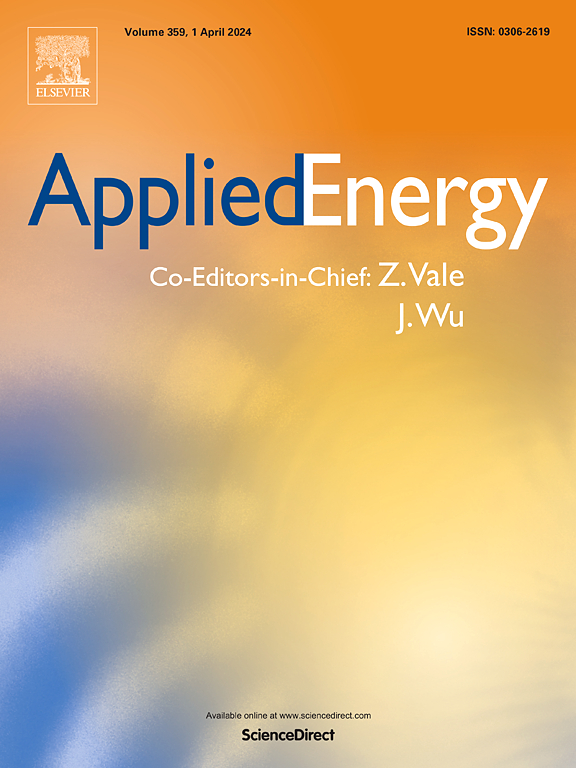Experimental and simulation study on internal thermal runaway development drives venting and flammable gas risk evaluate of Lithium-ion battery
IF 10.1
1区 工程技术
Q1 ENERGY & FUELS
引用次数: 0
Abstract
Heat generation and gas venting are the primary characteristics of thermal runaway in lithium-ion batteries. The convective and diffusive properties of the venting gas pose significant challenges for hazard analysis and safety assessment of thermal runaway venting. Quantifying the potential combustion risk associated with the vented flammable gases is crucial for ensuring battery safety. In this study, we investigated the thermal runaway venting behavior of Li(Ni0.8Co0.1Mn0.1)O2 prismatic cells through experimental and simulation methods. The results indicate that the battery has discharged 4.83 mol of combustible gas. The gas composition mainly consists of H2 (20.5 %), C2H4 (12.5 %), CH4 (5.5 %), CO (27.9 %), and CO2 (28.6 %). Gas combustion account for 19.6 % of the total venting time. We propose an internal thermal runaway progression-driven venting and flammable gas risk evaluation model. This model assesses the combustion risk of flammable gases during the venting process and identifies high-risk areas where gas combustion may occur, specifically the area 1 m above the safety valve, which exhibits the highest risk for flammable gas combustion and possesses the greatest explosive power. This research is poised to make a significant contribution to the safe design of battery pack systems.
求助全文
约1分钟内获得全文
求助全文
来源期刊

Applied Energy
工程技术-工程:化工
CiteScore
21.20
自引率
10.70%
发文量
1830
审稿时长
41 days
期刊介绍:
Applied Energy serves as a platform for sharing innovations, research, development, and demonstrations in energy conversion, conservation, and sustainable energy systems. The journal covers topics such as optimal energy resource use, environmental pollutant mitigation, and energy process analysis. It welcomes original papers, review articles, technical notes, and letters to the editor. Authors are encouraged to submit manuscripts that bridge the gap between research, development, and implementation. The journal addresses a wide spectrum of topics, including fossil and renewable energy technologies, energy economics, and environmental impacts. Applied Energy also explores modeling and forecasting, conservation strategies, and the social and economic implications of energy policies, including climate change mitigation. It is complemented by the open-access journal Advances in Applied Energy.
 求助内容:
求助内容: 应助结果提醒方式:
应助结果提醒方式:


